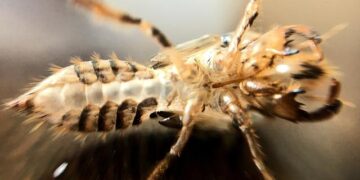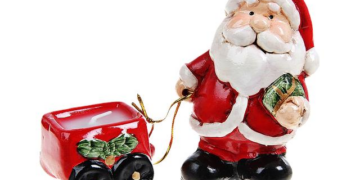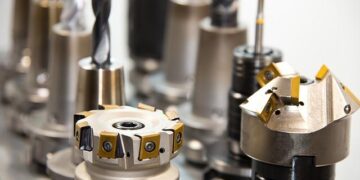When archaeologists unearthed homo erectus remains — the famous “Peking Man” — from a cave in what is now suburban Beijing in the 1920s, it made headlines around the world. But Peking Man wasn’t the only thing archaeologists found at the site: The cave also contained a number of scattered rodent remains, which went largely overlooked in subsequent media reports.
For zooarchaeologist Yuan Jing, those rodent remains aren’t just an incidental discovery. They represent a treasure trove of information about the life and times of Peking Man. Convincing his peers of this hasn’t always been easy, however. When Yuan returned to China after completing his doctoral studies at Chiba University in 1993, he joined a new, multidisciplinary archaeological team under the revered historian Yu Weichao. Two years later, while on a dig at the Bancun site in the central province of Henan, he pieced together seven pig skeletons from between 700 and 800 bones. Yu was stunned. “We’ve been piecing together pottery for decades, but this is the first time I’ve seen someone piece together animal skeletons,” Yuan remembers his boss saying.
Now 71, Yuan is the dean of zooarchaeology in China. In addition to his award-winning monograph, “Zooarchaeology of China,” he has helped set the standard for identifying Chinese domesticated pigs, traced the development of animal husbandry during the Neolithic period, and challenged longstanding errors in everything from ancient texts to recent scholarly literature.
Yet attracting interest to the field remains a challenge. His most recent book, “Zodiac Animals,” out this year from Guangxi Normal University Press, caught on in part because he deliberately chose to focus on a more accessible side of his research: the early history of the Chinese zodiac.
For all that, Yuan Jing firmly believes in the profound importance of animals to human society — and to understanding the origins of civilization. Speaking to Sixth Tone in September, Yuan shared his thoughts on the meaning of zooarchaeology, the crucial role animals played in the survival of our early ancestors, and how his own views on animals have changed over the years.
This interview has been edited for length and clarity.
Sixth Tone: First and foremost, what exactly does zooarchaeology entail? How does it differ from paleontology?
Yuan: Paleontology shares a close kinship with geology. It is primarily focused on examining the remains and fossils of organisms preserved in geological strata and on using those fossils to explore the evolution of life. Zooarchaeology represents a specialized branch of archaeology primarily concerned with unraveling the intricate interplay between ancient civilizations and animals. Within this field, zooarchaeologists conduct comprehensive studies on animal remains unearthed at archaeological sites, seeking to understand how ancient societies used animals, the pivotal role this use played in shaping human history, and the consequences of these interactions on the animals themselves.
For instance, after the invention of horseback riding, horse skeletons may exhibit various telltale spinal deformities, including bony outgrowths, asymmetrical development, and vertebral fusions. Conversely, horse bones dating to around 3,300 years ago, unearthed at the Anyang Yinxu site in modern-day Henan, do not display these pathological signs. This indicates that horseback riding had not yet emerged during the Shang dynasty (c. 1600 – 1046 B.C.), and horses were instead introduced to China for use in pulling carriages.
Sixth Tone: How have new technologies changed your work?
Yuan: In addition to visual observation and assessment, zooarchaeologists now routinely utilize technological tools such as radiocarbon dating, DNA analysis, stable carbon and nitrogen isotope analysis, and strontium isotope analysis. Radiocarbon dating provides precise chronological information on remains, helping us determine their age. DNA analysis reveals the lineage of animals, such as how Chinese cattle, sheep, and goats were introduced from other regions through cultural exchanges. Stable carbon and nitrogen isotope analyses help us understand the composition of animal diets, allowing us to differentiate between wild and domesticated animals based on their level of dietary convergence with humans. Finally, strontium isotope analysis can reveal whether animals were native to a given region or imported, shedding light on the circulation of animal resources. Basically, new technological methods allow us to uncover details about the history of animals, including their origins, diets, and time of demise, from a single bone.
Sixth Tone: Could you provide an example?
Yuan: Certainly. The Yongshan Blood Pool site, in what is today the northwestern city of Baoji, was a sacrificial site during the Qin (221 – 206 B.C) and Han (202 B.C. – AD 220) dynasties. Archaeologists have unearthed the skeletons of 26 horses at the site, and our findings helped show that there were 18 male and 8 female horses, all of them young. They were relatively small in size, possessed good endurance, and were not well-suited for short-distance sprints. Mitochondrial DNA analysis categorized these horses into six distinct lineages, indicating remarkable diversity. Strontium isotope ratios in the horse bones also indicated origins at least 100 kilometers away, reflecting an efficient government system capable of moving animal resources as needed.
By amalgamating this information, we gained insights into the collection, selection, rearing, and utilization of horse sacrifices during the Qin and Han periods. These details were not mentioned in historical documents like the Han-era scholar Sima Qian’s “Records of the Grand Historian.” Without zooarchaeology, the historical narrative would be incomplete.
Sixth Tone: Speaking of horses, you devoted a section of your recent book, “Zodiac Animals,” to the sudden appearance of domesticated horses in China around 3,300 years ago. What interested you about this topic?
Yuan: It is one of the most intriguing enigmas in Chinese archaeology. Horse bones are a rarity at archaeological sites dating to more than 3,300 years ago. However, after this period, we start seeing the emergence of carriage pits and horse pits at various sites, indicating the sudden introduction of domesticated horses to the region.
Our current understanding suggests that horses were brought to China from external regions, possibly through Xinjiang in the west or over the Mongolian Plateau. Regardless of the specific route, we would expect to find multiple sites along the way that contain horse bones. To gain a deeper understanding of this period, we need to establish connections between these sites before creating a comprehensive roadmap for further speculation.
However, the challenge lies in the scarcity of conclusive evidence that directly links horse bones discovered in the middle and lower regions of the Yellow River to sites outside China. This significant gap in our knowledge poses a hurdle in making scientifically sound judgments or even speculations. Reconstructing this history, especially in the absence of written records, is a formidable task.
Sixth Tone: Are there lesser-known animals that are vital to your work?
Yuan: Rodents, particularly rats and mice. In the late 1920s, the discovery of the first almost complete Peking Man skull at the Zhoukoudian site near Beijing captured worldwide attention. However, scholars at that time also uncovered scattered rodent bones at the site, which received comparatively little notice.
Today, zooarchaeologists attach great significance to rodent remains. These rodents are typically indigenous to their respective areas. After determining that the rodent bones belong to the correct period and are not subsequent intrusions, we can use their teeth to establish local strontium isotope standards. This means we can compare the strontium isotope ratios in rodent teeth with those of ancient humans and other animals to assess whether there was a change in the residence of ancient humans and other animals. This helps us understand the cultural exchanges ongoing in a given period that time.
Sixth Tone: The domestication of animals is a focal point in your field. How have Chinese archaeologists approached this subject?
Yuan: Let’s talk about pigs. Compared to animals like yaks, sheep, goats, and horses, which were domesticated in Western and Central Asia before being introduced to what is now China, pigs were domesticated inside China. Research at prehistoric sites in the Yellow River Basin has shown that our ancestors began pig farming approximately 9,000 years ago, and I consider pig domestication, husbandry, and breeding techniques to be some of the most significant innovations of ancient China.
This achievement is closely linked to population growth, the development of complex societies, and the origins of civilization. Eventually, pig-rearing technology also spread across East Asia. That said, we still cannot definitively determine when and where the domestication, breeding, and control of wild boars began. I hope future archaeological excavations will produce more discoveries in this area, enhancing our understanding of the origins of domesticated pigs.
I’d also like to mention chickens. In the late 1980s, scholars from China and the United Kingdom published a paper in the journal “Archaeometry” claiming to have unearthed the world’s earliest domesticated chickens at the Cishan site in what is today the northern Chinese province of Hebei. The site was dated to around 8,000 years ago. Later, I discovered issues with their bone identifications: The remains were likely from pheasants, a type of wild fowl, rather than domesticated chickens. Pheasants and chickens are distinct species and should not be confused. At the time, some foreign experts jokingly told me that my findings might upset people, as it meant that China no longer enjoyed the status of having “discovered the world’s earliest domesticated chickens.” But science is science, and it isn’t contingent on whether people are happy about it or not. Archaeology is grounded in empirical evidence, and we must always rigorously uphold scientific principles.
Sixth Tone: In “Zodiac Animals,” you discuss artifacts featuring animal imagery that have been found at archaeological sites in China. Does this fall under the purview of zooarchaeology as well?
Yuan: It does. Artifacts adorned with animal imagery and crafted from various materials provide invaluable insights into society. For instance, in pictorial stones and murals, we often see depictions of humans plowing fields with oxen. However, for effective plowing, it was crucial to ensure the oxen’s obedience. Ancient people did this by piercing a hole between an ox’s nostrils and attaching a ring through it, connected to a rope. This rope manipulation enabled humans to control the ox during plowing. A bronze ritual vessel shaped like a bull’s head, now housed in the Shanghai Museum and dating to the late Spring and Autumn period (770 – 481 B.C.), features a copper ring on the bull’s nose, providing evidence that this practice was in use in China at that time. That’s not something you can determine by looking at excavated ox bones, but by combining bones with artifacts, we can objectively reconstruct the history of ancient practices related to controlling oxen for plowing, and thereby date a significant revolution in the productivity of ancient agricultural societies.
Sixth Tone: After years of work in zooarchaeology, how has your perception of the relationship between humans and animals evolved?
Yuan: I believe I’ve grown to appreciate animals more over the years. My work has taught me that without humans, animals continue to thrive, but without animals, humans can barely move forward.
(Header image: Pig skeletons found at a site dating to the Shang dynasty in Yanshi, Henan province. Courtesy of Yuan Jing)
>>> Read full article>>>
Copyright for syndicated content belongs to the linked Source : SixthTone – https://www.sixthtone.com/news/1013834/A%20New%20History%20of%20the%20Chinese%20Zodiac































